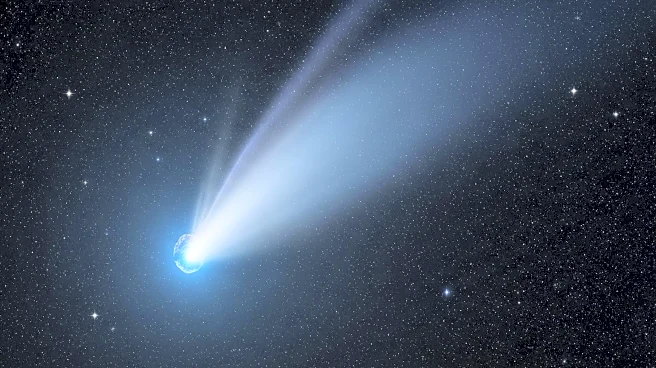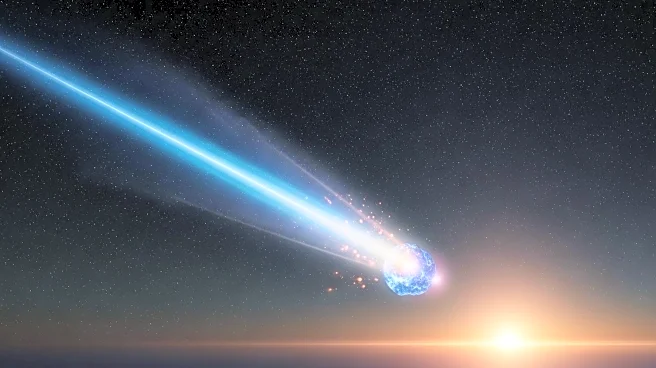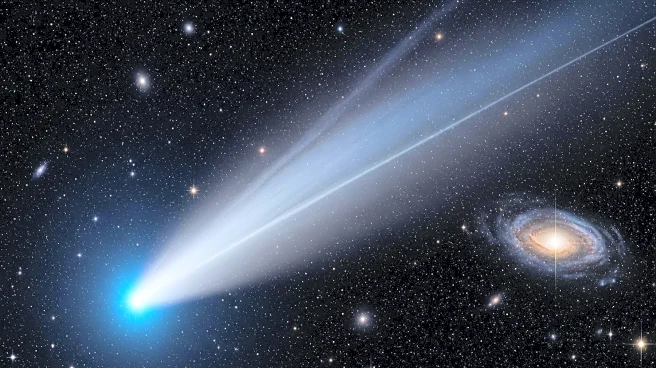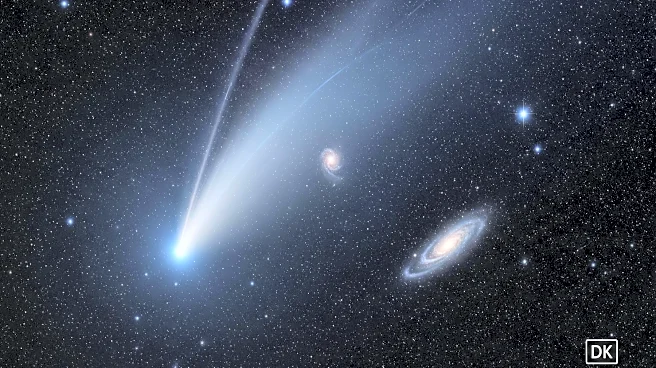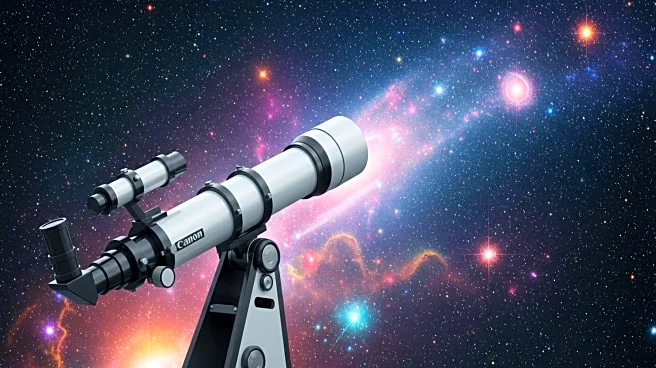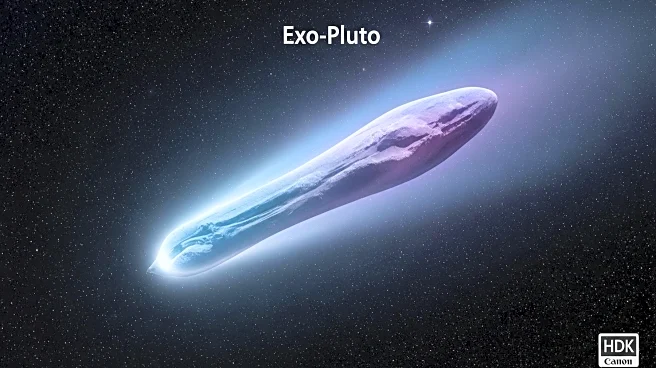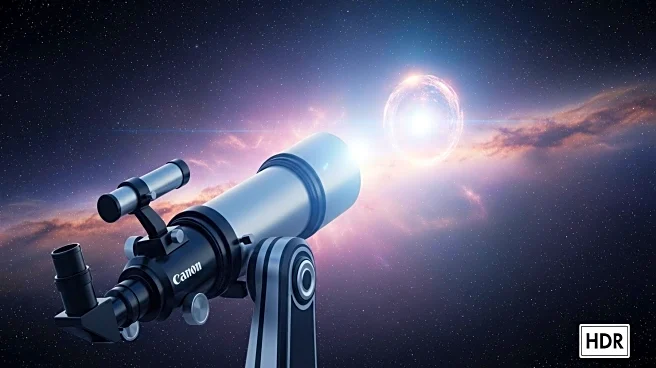What's Happening?
The interstellar comet 3I/ATLAS has been observed developing a tail as it nears its closest approach to the Sun, known as perihelion, expected on October 29, 2025. The observations were made using the Gemini South telescope, revealing changes in the comet's particles and providing initial insights into its chemical composition. 3I/ATLAS is distinct from other known interstellar objects and comets within our solar system, with its activity beginning beyond Jupiter's orbit due to its high carbon dioxide ice content. This early activity is unusual compared to typical comets, which usually become active closer to the Sun.
Why It's Important?
The study of 3I/ATLAS offers a unique opportunity to understand interstellar objects and their characteristics. As the third known interstellar object to pass through our solar system, it provides a rare chance to study materials and conditions from beyond our solar system. The findings could enhance knowledge about the formation of comets and the solar system's history. Additionally, the comet's unique composition and behavior may inform future research on interstellar objects, potentially impacting theories about the origins of the solar system and the distribution of materials in the galaxy.
What's Next?
Astronomers will continue to monitor 3I/ATLAS as it approaches perihelion and eventually moves back into interstellar space. Further analysis of its tail and chemical composition is expected, which could yield more detailed information about its origins and properties. The comet's journey offers an extended period for observation, allowing scientists to gather comprehensive data and refine their understanding of interstellar comets.
